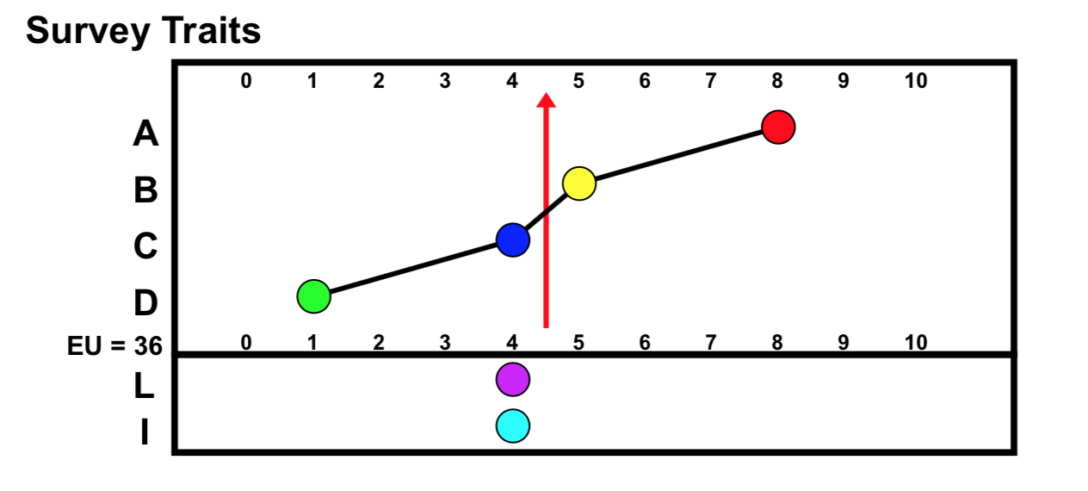Have you noticed the multicolored charts under each nameplate around the agency? These are taken from each employee’s Culture Index (CI) profile. For some, these charts may be hard to read. This article gives a brief overview of the different personality traits measured by CI so you can better understand yours, along with those of your coworkers.
Why Do We Use Culture Index?
Culture Index isn’t a screening tool; rather, SAM uses it as a complement to the hiring process. It works by assessing an individual’s inherent traits, as well as which traits they perceive as necessary for their job.
The history of Culture Index began in 444 BCE when Empedocles theorized that people behave in four distinctly different ways. He categorized them according to the classical elements – water, earth, fire, and air.
This theory was expanded on by Hippocrates shortly thereafter. However, more than two millennia would pass before personality assessments regained significant momentum. Psychologists began developing more scientific approaches to categorizing human behavior in the early 20th century. In 1956, industrial psychologist Walter Clark expanded on the work of his predecessors to produce a self-administered behavior test, based on the still-popular DISC model. Subjects would respond to a checklist of adjectives and choose those that best described them. Sound familiar?
The founder of Culture Index worked for the J.P. Cleaver Company, the first to commercialize the DISC assessment. Eventually, CI founders Gary and Cecilia Walstrom branched off to develop their own version of a workplace behavioral assessment. They enlisted the help of Dr. Louis Janda, who developed the CI survey after five years of research and testing.
Today, SAM uses Culture Index to measure seven work-related personality traits. In addition to matching job candidates with positions they will more naturally succeed in, these assessments give valuable information about the best ways to communicate with coworkers.
How to Interpret the Dots
We’ll focus on the four dots in the main graph for this article. Here’s what each represents:
- Red (A): Autonomy. The ability to choose and be self-sufficient.
- Yellow (B): Social ability. Relating to the way people in groups behave and interact.
- Blue (C): Patience. The particular speed at which somebody moves.
- Green (D): Conformity. Behaving or thinking in a socially acceptable or expected way.
The vertical red line on the graph represents the average level of each trait for the general population. So, a dot to the right of the red line means you have a higher level of that trait than most people, and a dot to the left represents the inverse.
Everyone has a high and a low trait. To find your high trait, look at the dot that is farther to the right than any of the others. We’ll only focus on the high traits here.
The Four Personality Types
Each high trait has a set of characteristics that typically accompanies it. Of course, no person can be fully described using a set of words. Rather, these serve as a general guide to understanding how someone behaves.
High A
- Traits: Driven, independent, future-oriented, risk-takers
- Motivators: Freedom to achieve their goals, money, undefined challenges, facts and data
High B
- Traits: Personable, outgoing, persuasive, external verbal processors
- Motivators: Personal interaction, status, public recognition, consensus-building opportunities
High C
- Traits: Patient, laid-back, procedural, steady
- Motivators: Limited interruptions, checklists, limited chaos, low pressure and stress
High D
- Traits: Perfectionist, detailed-oriented, historical decision-maker, cautious
- Motivators: Factual information in writing, removing risk, training, knowledge
All in all, Culture Index is a valuable tool for understanding the eclectic mix of personalities that make up Team SAM. While there’s much more that goes into a full CI profile, this information should help you better understand yourself and those you work with.
